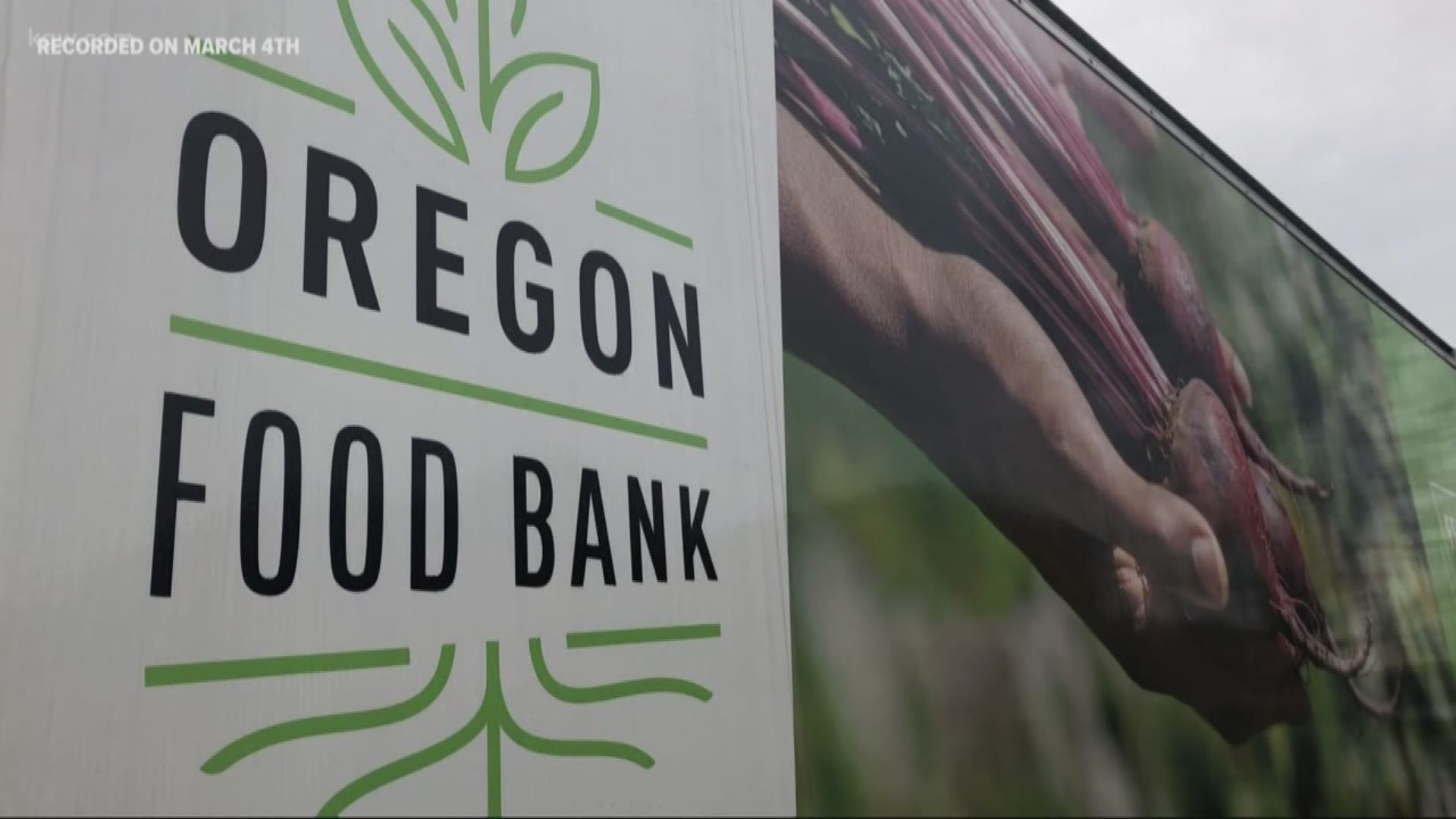PORTLAND, Ore — There was a hunger crisis in our community before this global health crisis. Now, that deep-rooted problem is only growing larger.
The demand for food in light of the COVID-19 pandemic is growing and experts say food insecurity will become a larger local and global emergency.
The Oregon Food Bank’s partner regional food banks and food assistance sites around Oregon and Southwest Washington report a 20 to 70 percent increase in people accessing food assistance.
“It’s the economic disruption. The most common thing we are hearing is, ‘I don’t have a job and I can’t pay my bills’,” Oregon Food Bank CEO Susannah Morgan said. “The second most common is kids are out of school, they can’t work full time and the kids were getting 10 meals a week at school, so now additional resources are needed by the households.”
One in five of our neighbors in Oregon and Southwest Washington struggles to feed themselves and turns to the charitable food assistance system for help. From February 2019 to February 2020, Morgan says 860,000 people in Oregon and Southwest Washington asked for help getting food.
In her 24-year career in food banks across the country, Morgan says she has never seen a national or global hunger crisis of this magnitude.
“This is the worst hunger crisis of my career and my lifetime. And the statistics we are seeing on unemployment are worse than the Great Depression of the 1930s. We are all anticipating that when we come out of the stay-home orders that we will move into some kind of recession. So it won’t be a magical moment in which all of the sudden everything is better,” Morgan said.
“So yeah, I am worried, I am not sleeping well. I am absolutely determined to get through this situation by ensuring that every single one of our neighbors in Oregon and Southwest Washington has access to food. And I think that this is months and months and months, and possibly years, of work yet to come for us to turn this around.”
Food is available at the moment. The Oregon Food Bank and its network of more than 1,400 partner pantries and food assistance sites - most of which are still open - are not experiencing a shortage of food or supplies at this point. That is mostly due to the community’s generosity and Gov. Kate Brown’s recent allocation of $8 million.
Morgan says they intend to spend $1 million per week on food purchases and distribution through June.
Come June, they expect to start seeing a supply of food come in from the federal government’s stimulus bills. Much of that money will be used to support Oregon producers and growers if it’s feasible to get their food quickly and in proper quantities.
The food bank is asking everyone to put a pause on food drives at this time. It is not accepting physical food because those items would need to go into quarantine and be carefully sorted and handled. Because of social distancing measures in their warehouses, the food bank doesn’t have the volunteer force in place to do any of that sorting or handling.
“We need money to turn into food and to turn into warehouse workers, and drivers, and trucks, and palette decks, and all the things that are needed to get the food from the food manufacturers to our neighbors facing food shortages,” Morgan added.
Financial donations are the best way you can help right now. The need will be ongoing because it’s unclear how long this crisis will stretch. The Oregon Food Bank says it needs the community’s support to keep the food flowing and to ensure they never run out of supplies or distribution capacity.
Morgan encourages Oregonians and Washingtonians to call their mayors, state legislators and congressional delegation to encourage them to end hunger and send the message that their communities are suffering from hunger at unprecedented rates.
“What we hear consistently is how hard it is to get through your daily life when you’re worried about how you’re going to feed your family, how everything becomes harder: it becomes harder to sleep, harder to plan, harder to think about getting rent done, harder to work, harder to care for your children well. Everything becomes more stressful when your basic needs aren’t easy to meet,” Morgan said.
Half of kids in Oregon, from kindergarten through 12th grade, qualify for free or reduced lunches at school due to their families’ low income. While the coronavirus outbreak closed schools, most districts around the state are still providing meals to Oregon kids while they’re distance learning.
But Morgan says the meals are not as easy to access as when children were in school.
RELATED: Portland Public Schools serves up thousands of free breakfasts, lunches during school shutdown
Our nation’s food bank system should be the last line of defense against hunger, Morgan says. A good offense is truly the solution, including opportunities for living wage jobs, access to healthcare and affordable housing.
But safety net programs, namely USDA’s Supplemental Nutrition Assistance Program (SNAP), are the best resource for anyone struggling to feed themselves or their families. Morgan is encouraging those in need of food assistance to sign up for SNAP benefits.
KGW is proud to partner with the Oregon Food Bank for the 17th annual "KGW Great Food Drive." You can donate here.

